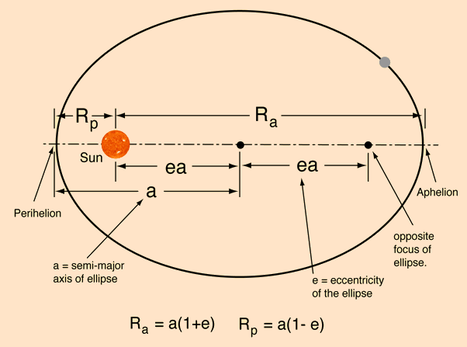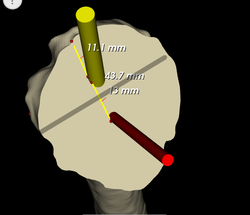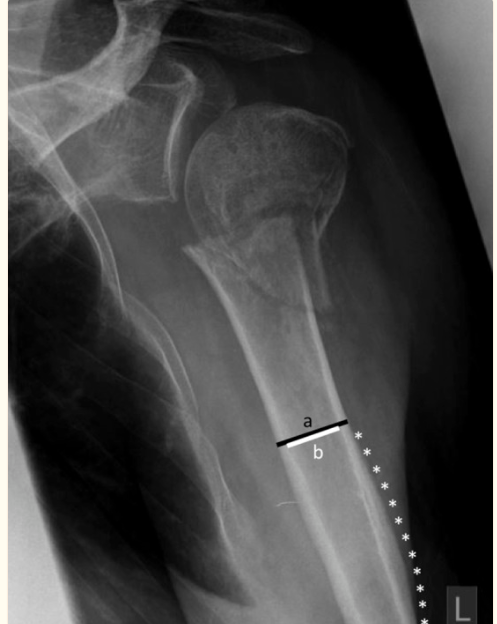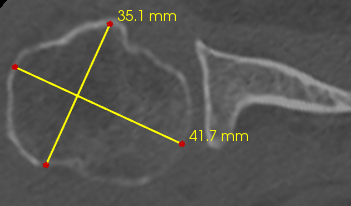Section 1: The dataset
The following are studies, thoughts and ideas. Nothing is validated or peer reviewed. A think tank for discussion and entertainment. Predicted dimensions or sizes or images and drawings are not intended to use or treat.
section 2: estimation of FLEX/PERFORM humeral stem size based on MINOR humeral head diameter and thickness lateral humeral cortex shaft
FLEX
The 75% DFR estimated size is :
entertainment purposes only. Not validated. each physician must use their judgement. All rights reserved
PERFORM
|
The cortical thickness of the proximal humeral diaphysis predicts bone mineral density of the proximal humerus
June 2003 The Bone & Joint Journal 85(4):611-7 |
|
We found clinically useful threshold values for the deltoid tuberosity index less than 1.4 and for the Tingart measurement less than 5 mm for determination of low bone quality of the proximal humerus.
Deltoid Tuberosity Index: A Simple Radiographic Tool to Assess Local Bone Quality in Proximal Humerus FracturesChristian Spross, MD, Nicola Kaestle, MD, Emanuel Benninger, MD, Jürgen Fornaro, MD, Johannes Erhardt, MD, Vilijam Zdravkovic, MD, and Bernhard Jost, Prof, MD |
|
SECTION 3: Messieh humeral retroversion measurement angle technique
The elbow transepicondylar axis may not be required
Data in progress; Not yet validated; |
The mean humeral retroversion is 31.42° ± 12.10° using CT methods; the method using the bicipital groove center showed lower concordance, whereas the method using the posterior margin of the bicipital groove demonstrated higher concordance
|
Not validated
SECtion 4: mathematical description of the humeral head diameter
Observations of the shoulder joint, combined with a well controlled CT scan dataset, were the primary source of data enabling the derivation of the anatomy of the proximal humerus. This is a key step to achieve balance with reverse shoulder replacements . The major/ minor diameters of the humeral head is normally 1.1 and follows Keplers law for planetary orbits. (Not validated)
SECTION 5: POSTERIOR HUMERAL SUBLUXATION BASED ON GLENOID VERSION
SECTION 6: Eccentricity of PROXIMAL HUMERUS

The eccentricity of an ellipse can be defined as ratio between foci (2ea) to the major axis 2a
http://hyperphysics.phy-astr.gsu.edu/hbase/kepler.html#c4

Minor axis 44
Major axis 48
eccentricty= .4 (range = .47-5)
not validated
Major axis 48
eccentricty= .4 (range = .47-5)
not validated
ALL information is considered confidential. This website is password protected; attempts to use or view the contents without permission from the owner is prohibited.






